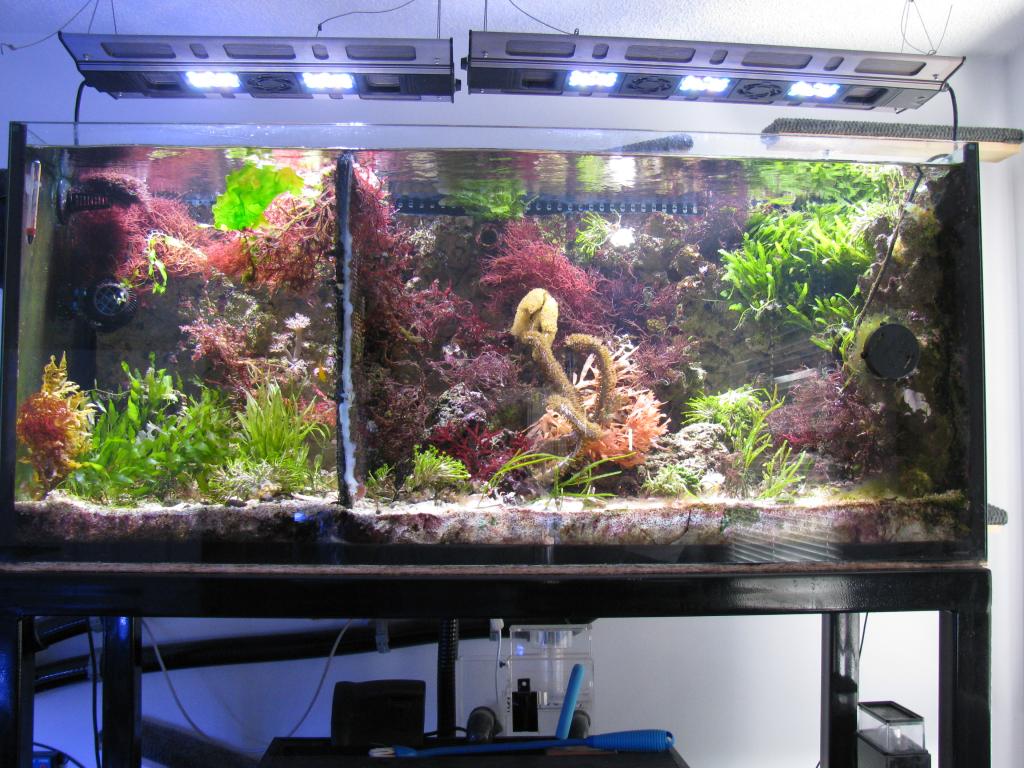
Ok i put an invasive macoalgae in my display refugium and now i'm trying to cover all the bases to remove it.
What do i know about it;
CAULERPA MEXICANA:
This particular species of Caulerpa is one of the hardiest varieties available for culture in the marine aquarium. C. Mexicana has a deep rich green color with beautiful segmented fronds. It grows as small compact fronds in turbulent water, but can extent into larger leaflets in calmer conditions up to 6" tall.
You can see the stolons(roots, runners) grabing system in action and how agressive this algae is.Extremely good nitrate exporter but too rampant for my taste. And speaking of taste thats just it nothing seem to consume it. So very useless for my. i rather have the caulerpa profila who's a favorite of the tangs.
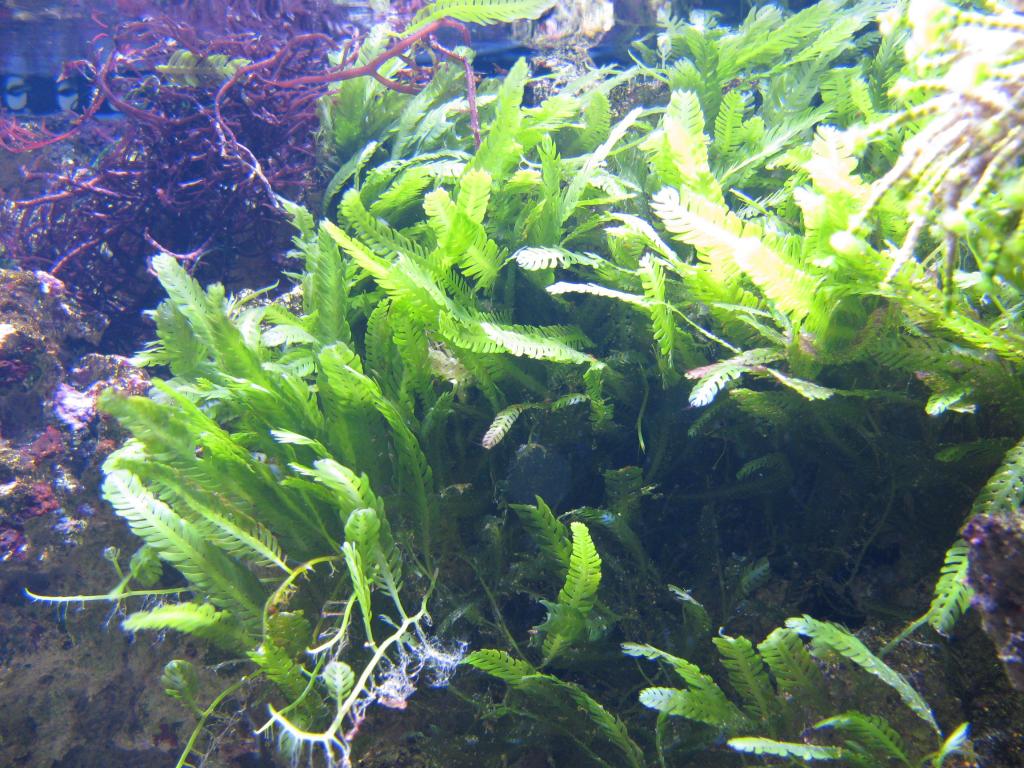
Now my system being fed by the display refugium by gravity poses a problem ; because any fragmentation that may occur could polute my main reef, via the feed from the refugium line. So i shut it down, for the duration of this removal process.
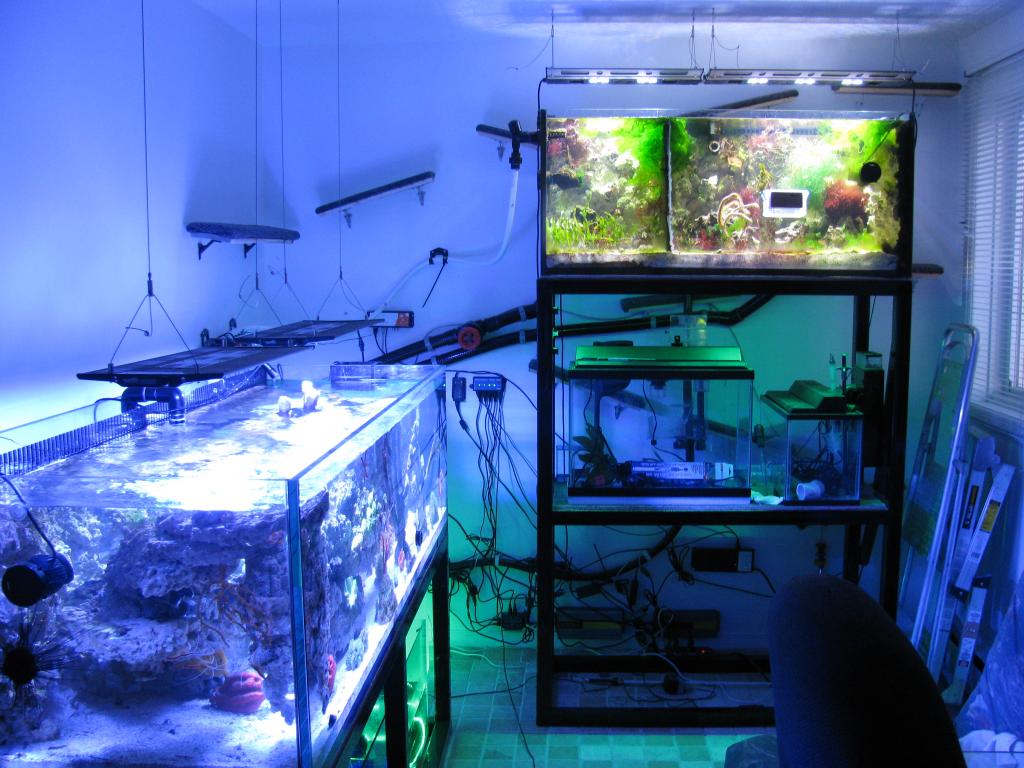
Removal process;
The most important term of this thread; Fragmentation
Vegetative reproduction by fragmentation
A fragment from any part of this algae can produce a new plant, as long
as that fragment contains a nucleus and other organelles. This is an
important point for the management of invasive Caulerpas.
Fisrt part mechanical;
-shutting any connection to your main reef or other tank is a must
-shutting all pumps
-using gloves helps because you risk , one getting a worm sting you or spreading the algae involuntary to other places .
1- Grab the longest sprouts first and pull as long as you can without breaking it, and continu till their none left of that type.
- have a small bucket of hot water near you to plunge you hand in with residu and small leaves left over don't wash your hands with small pieces of algae in your tank you want to avoid spreading the algae as much as possible. So after each grab you plunges you hand in that hot water to clean and rince(glove)..
2- Next go for the the shorter ones close to the rocks same technique with the hot water. Change the water as much as you need to . Don't flush it, you'll contaminate your city system. You'll use a screen later and let dry before putting in the garbage bin.
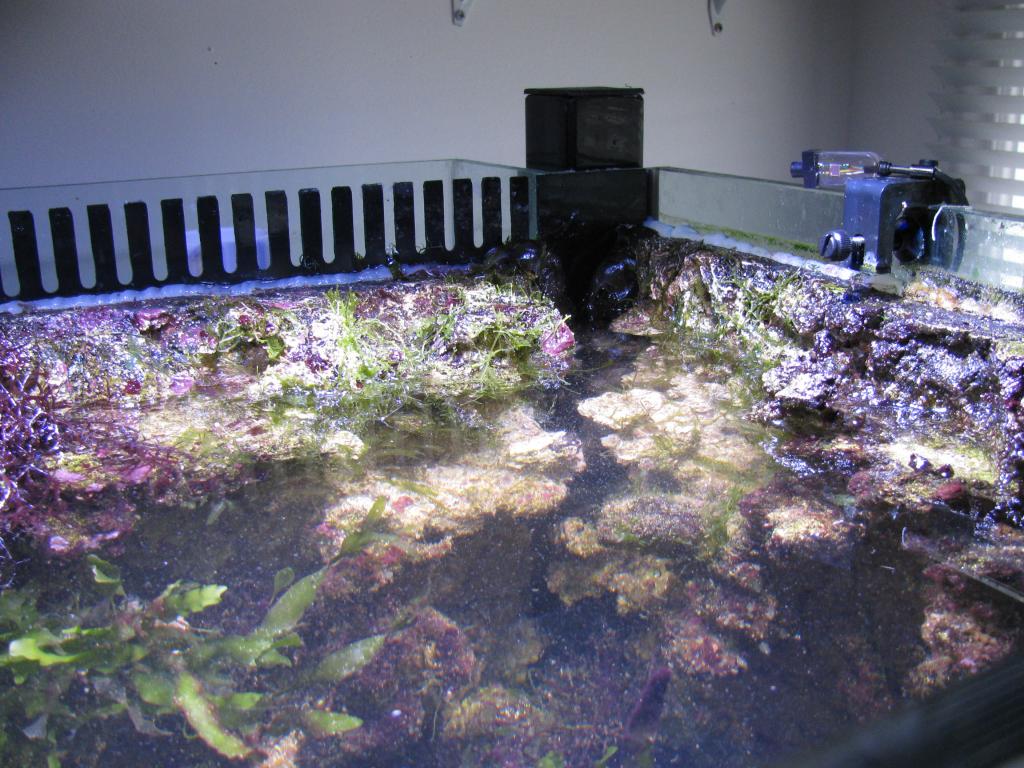
3- Now at this point you can drain a bit of water in your tank if you want or can to the lowest level possible for an hour or so.
As you can see not much leaves are left in that picture on top only rock. This is to avoid fragmentation. When a macroalgae lack food or light it enters a state of fusion this will be part of are second phase of removal .
4- With a knife make sure you scrape all the rocks of any leaves , stolon or rhisome to minimize any growth or fragmentation from the algae.
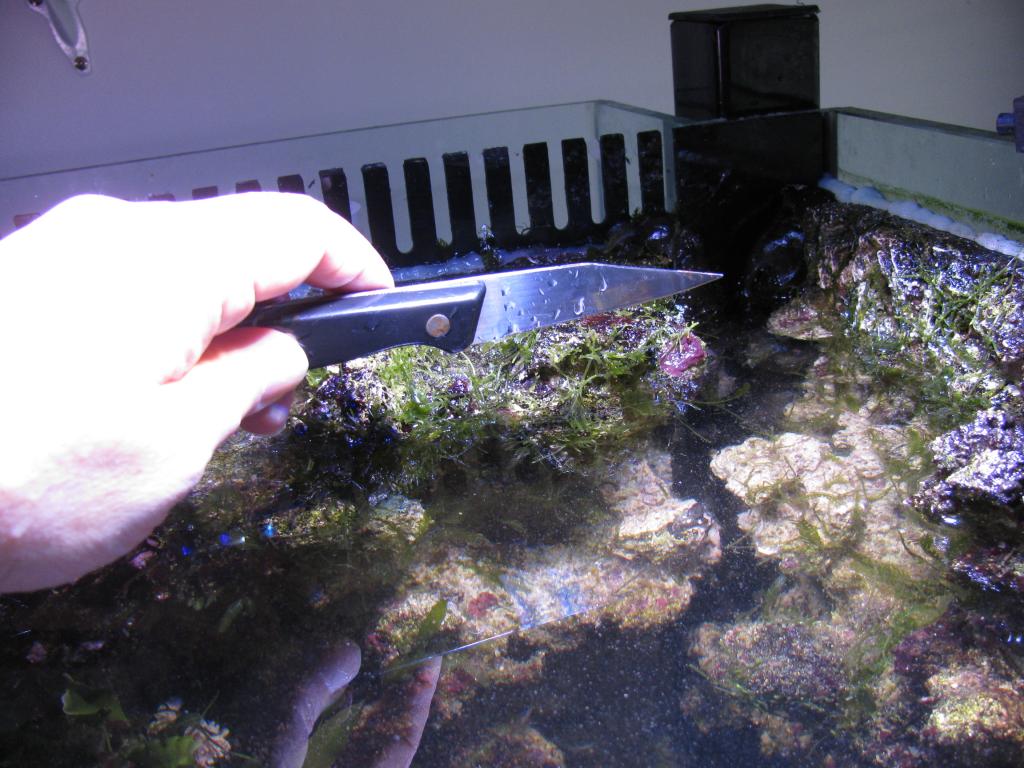
You can use a vaccum to syphon any debris that's on the site(your pumps should all have been stopped remember?) so nothing is spread around.
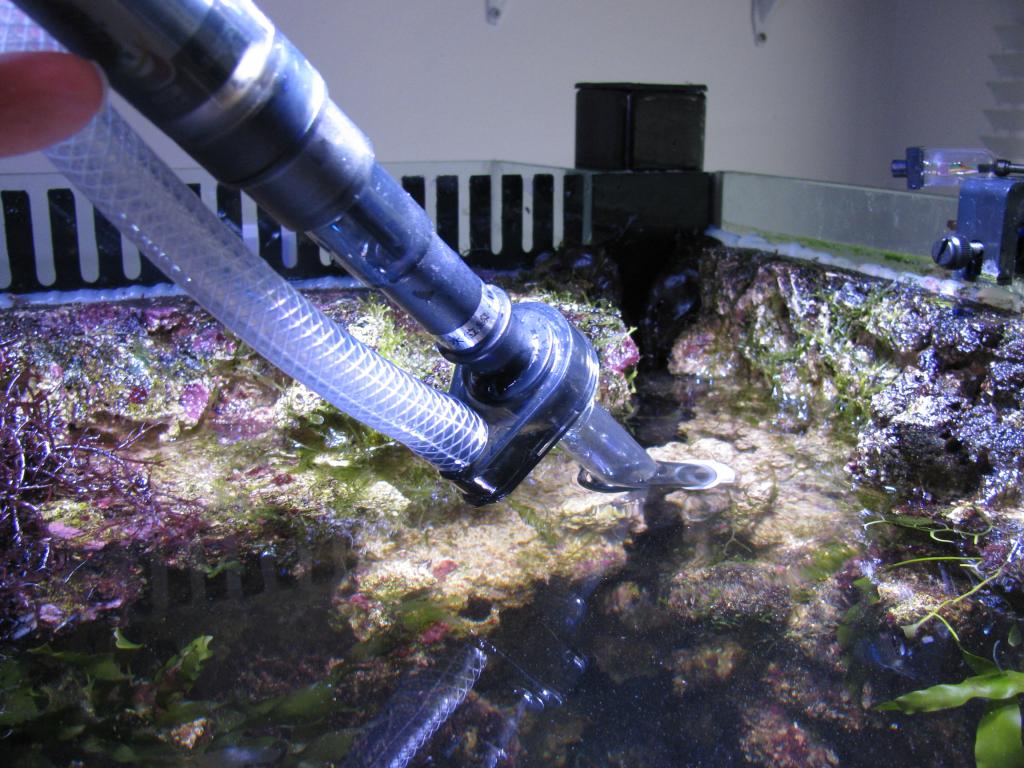
Covering the algae by plastic foil is a fast, cheap method useful .
Vegetative reproduction by fragmentation
A fragment from any part of this alga can produce a new plant, as long
as that fragment contains a nucleus and other organelles. This is an
important point for the management of invasive Caulerpas.
5-Now i've started my flow pumps to get the water going and the debris moving around and gather in pockets that i can grab in clumps, i do that for a while the little pieces will get syphoned by the big flow pump and hopefully get trapped there . You hope for it . Do this till nothing else floats around and ckeck your sand , and oh yes its whole day job i forgot to tell you.....
After that i cleaned up my flow pumps in hot water and scrape every inch of it.
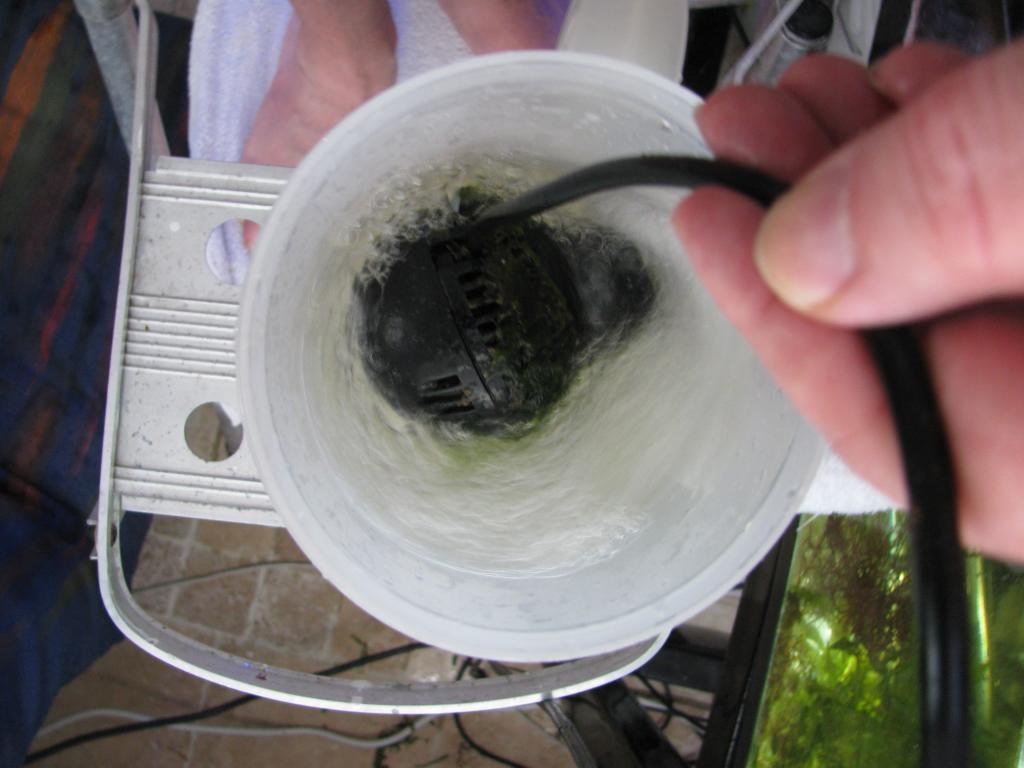
6-Now the covering part , to avoid the Caulerpa to grow again ;
As stated before foil and plastic or i used this i have lots of other macroalgaes.
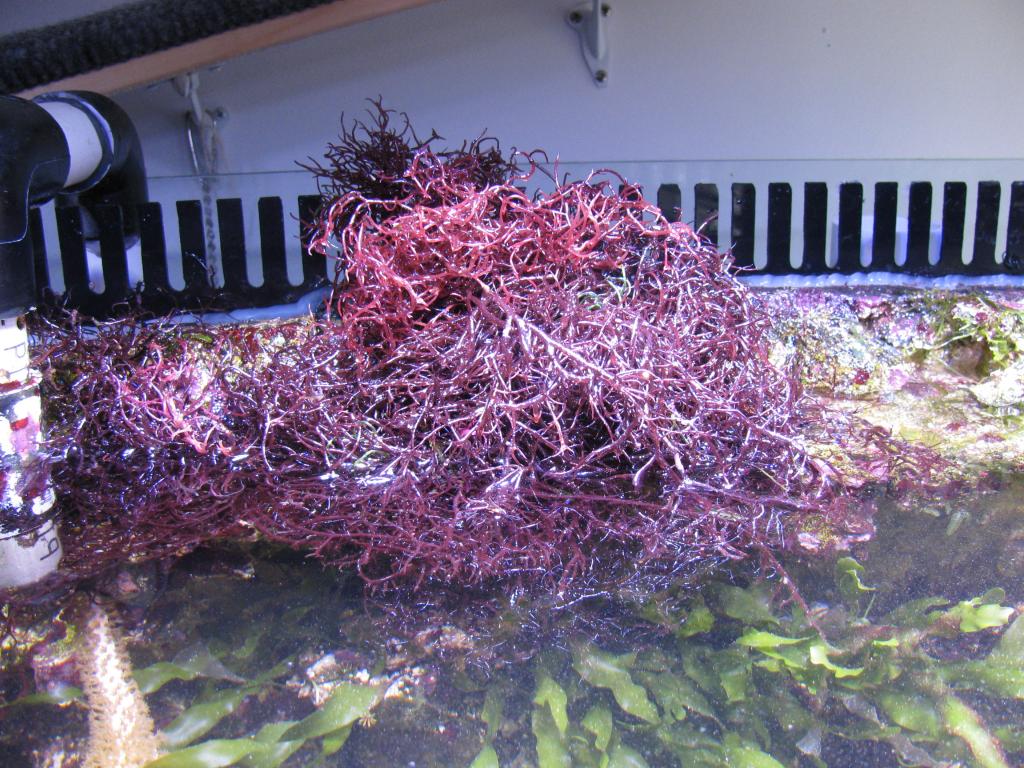
Make sure all the areas are covered and surrounds where the caulerpas was before . If it has no lights to grow it shouldn't come back, if you leave a hole you'll have to start over...
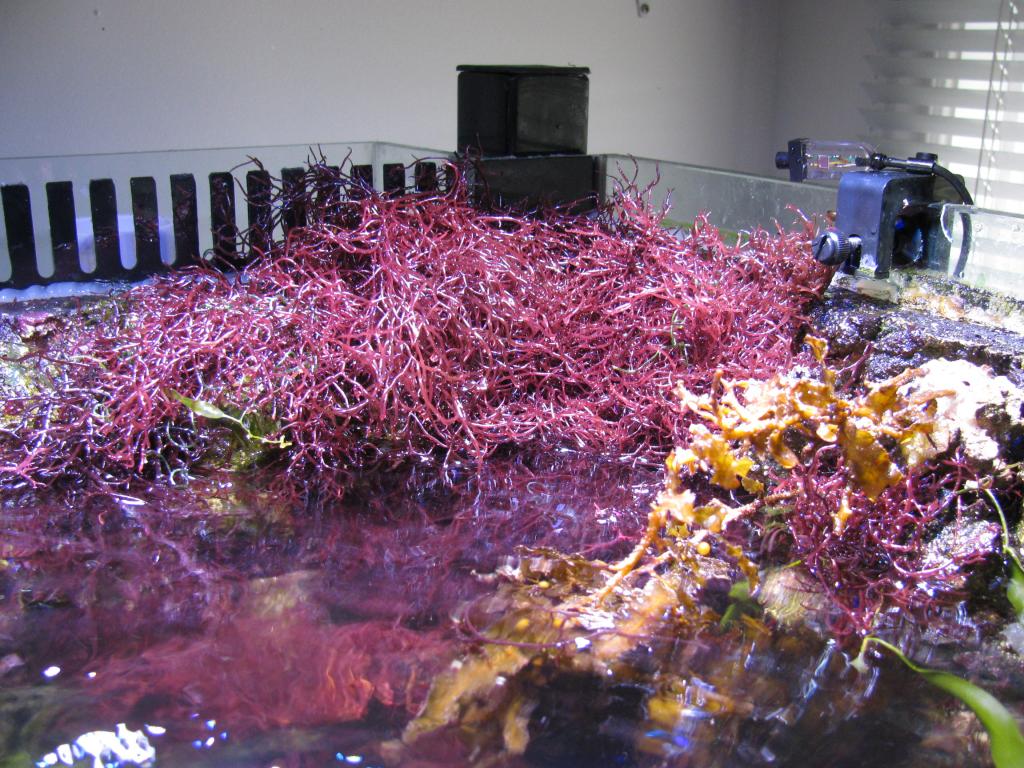
I used severald types to block the light and plugged the corner with a new kind of algaes. Kinda aqualandscaping if you will.
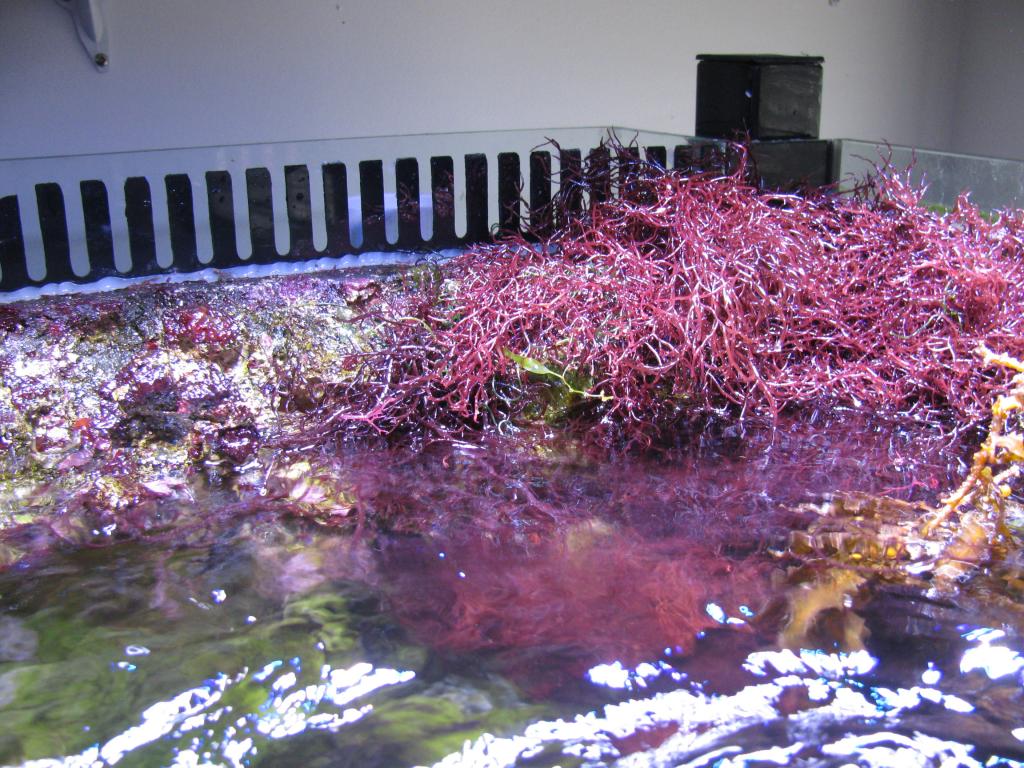
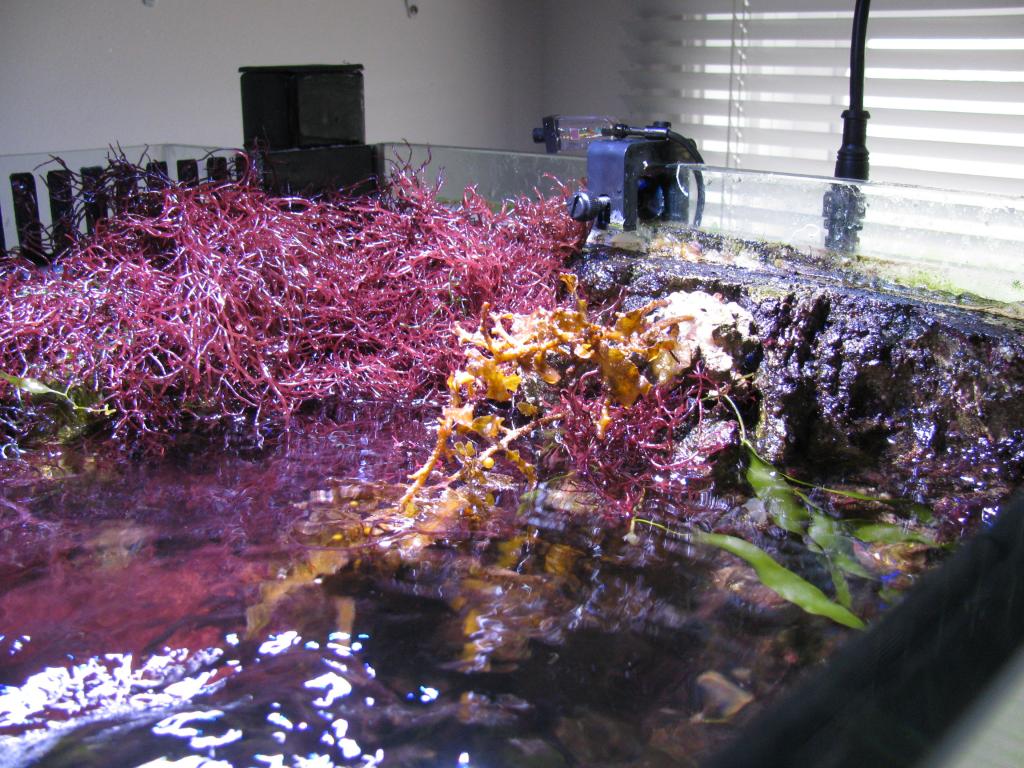
Don't forget the bottom..... Anchor your new turff.Glue it if you have too.
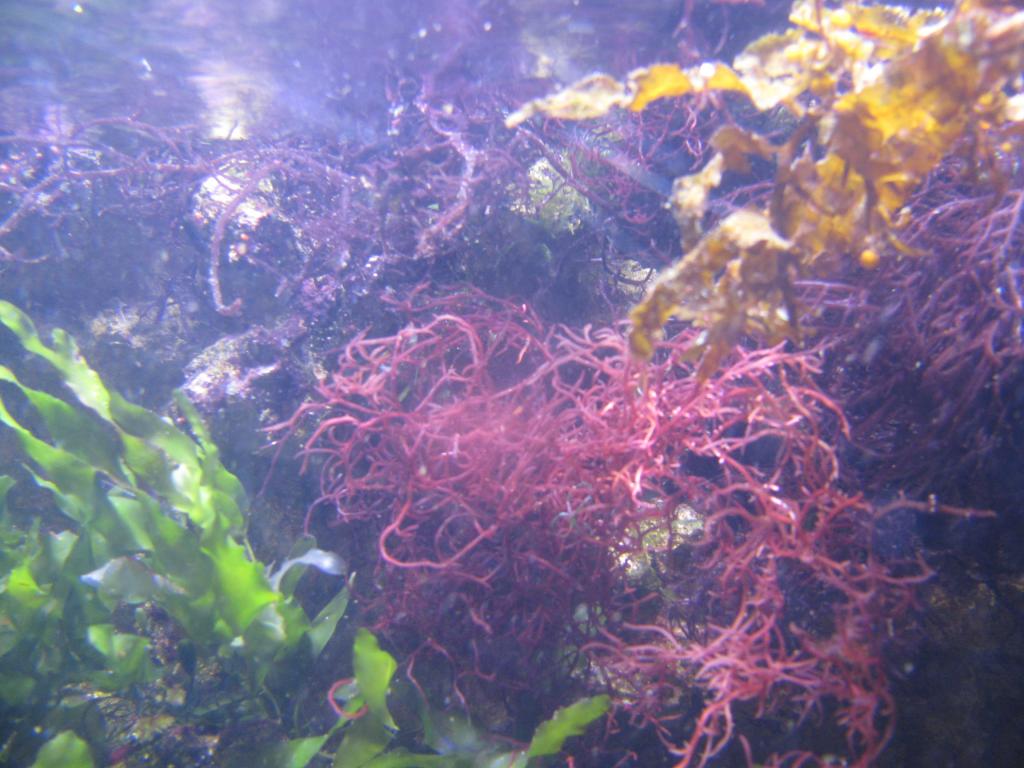
So i'll tell you in a few months. I view my chances at 80% success. I have the methodology, but it take only one little leaf, and i've seen one that escape. And i know she's growing somewhere. But the important thing is to stay on top. I'l leave my feed connection closed for at least 2 weeks and then reopen the link by then any rotting roots should have gone by then.
Any thoughts or suggestion let me know.














